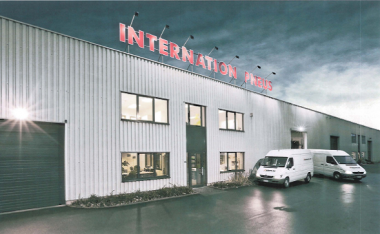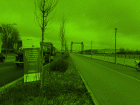
An operation supported by the European Regional Development Fund (ERDF) and the Brussels Region is unlocking the potential of land and buildings in the Canal Area by cleaning up the soil
***
2014-06-23 – The Brussels Greenfields operation is nearly at an end. In total, some 170,000 m2 of former industrial land should have been treated or developed across the Canal Area territory of the channel when the work that has been carried out and supported financially has been completed. 4.6 million euros have been promised, with the support of the European Regional Development Fund (ERDF) among other organisations.
The polluted industrial heritage of previous centuries, which offers considerable development potential, is thus gradually being put to use to create spaces for a new, environmentally friendly economy.
Launched in late 2009, the operation has organised two calls for investors wishing to develop their economic activities in the Canal Area (*). Given the area’s industrial past, some land was stilled scarred by the activities that had generated wealth for Brussels in previous decades. Today, activities are no longer developed without also taking the environment into account.
Supporting decontamination to promote investment
Brussels Greenfields, funded by European and regional funds and managed by Brussels Environment (IBGE), offered companies a subsidy for the treatment of contaminated soil in connection with investments undertaken near the Canal. The idea of this was to facilitate the introduction of new business activity there by relieving companies of the financial burden of treating polluted soil. In order to obtain this support, the businesses and public authorities concerned were required to submit project proposals and provide arguments in support of their application.
‘The first requirement was that the pollution must be “orphan pollution”,’ say José Mendes and Gregory Van Roy from Brussels Environment. This means soil pollution whose perpetrator can no longer be identified. ‘Applicants then had to present their construction or renovation plans, which preferably had to be ecologically sustainable, and give details of the proposed business project,’ they add.
12 projects supported, 2,200 jobs expected
Several criteria were taken into account to determine whether Brussels Greenfields could cover part of the cost – between 50 and 75% – of treating the polluted land. The type of construction was obviously one factor. Energy-efficient, environmentally friendly buildings were favoured. Projects also had to be financially realistic, feasible and robust, and it was important for jobs to be involved (the 12 projects selected should lead to the creation of 2,200 jobs). Those jobs must particularly benefit the inhabitants of the Canal Area. The panel that examined the projects also assessed whether the subsidy would have a stimulatory effect on the launch of the project. Finally, the type of pollution treatment was also taken into account: the better the decontamination, the greater the amount of support offered.
From the submission of the plans to the completion of the work, some time may elapse. Of the twelve applications selected after the two calls for projects, only the project of the company Internation Pneus Nouvelle has been completed and paid for so far. The development work needed to create a new storage area for motorcycle and scooter tyres in Anderlecht was not particularly extensive. Contracts signed with Brussels Greenfields are not exclusively to do with soil remediation, incidentally: sometimes the aim is simply to define and contain the risk of pollution by means of lighter treatment. This is because the nature of the pollution varies depending on the past activities. With heavy metals at one site and chlorinated solvents at another, it can sometimes be difficult to identify the extent of the damage correctly. Even extracting multiple soil cores from the site does not guarantee a comprehensive analysis of the soil. The support granted therefore also reflects the accuracy of the assessment carried out, as the costs of treating soil can only ever be estimated.
Varied areas of intervention
Several larger industrial projects have also benefited from support. Sibelga, for example, has begun the redevelopment and redeployment of its Quai des Usines site in Brussels. The idea is to repatriate its call centre near other activities of the company. The project has the potential to create 120 jobs.
MaBru, better known as the Brussels Morning Market, has also developed its activities. Its project involved the construction of a new refrigeration and storage warehouse on the site of the market. Soil pollution was linked to the presence of a former gasworks. MaBru took the opportunity to implement a highly eco-friendly project.
Equally ambitiously, DOCKS Bruxsel (formerly Just Under The Sky) will create a commercial centre (with retail and businesses premises, leisure, culture, entertainment and event venues) by the Canal near the Van Praet bridge, on the Godin factory site. Again, green building and respect for the environment are prominent features, as well as potential jobs. Support for pollution treatment has therefore been granted by Brussels Greenfields.
In Anderlecht, on the other side of the Brussels Region, a smaller project has been selected: the creation of urban vegetable gardens in the Gare du Midi district. Not far away, development work will continue at the Anderlecht abattoirs. The project there, under the name of ‘Soma’, involves the creation of a covered market. In short, the areas of intervention of Brussels Greenfields are varied, as is the amount of aid, which varies from 15,000 to 800,000 euros. In all cases, however, the aim is to promote economic activity rather than housing.
Now that the allocation of support for decontamination is drawing to an end, the overall picture is positive. Although relatively few projects have benefited from this vital assistance, the area of land that has been protected or treated is extensive, and this has made it possible to develop the spaces available in the Canal Area for new job-creating activities.
Jean-Pierre Borloo
More information:
(*) Its administrative name, for this operation in particular, is the Priority Intervention Zone (ZIP).


















